Where is Andorra? and other FAQs about my IAP by Anelise N. '19
Teaching abroad in a quadrilingual country
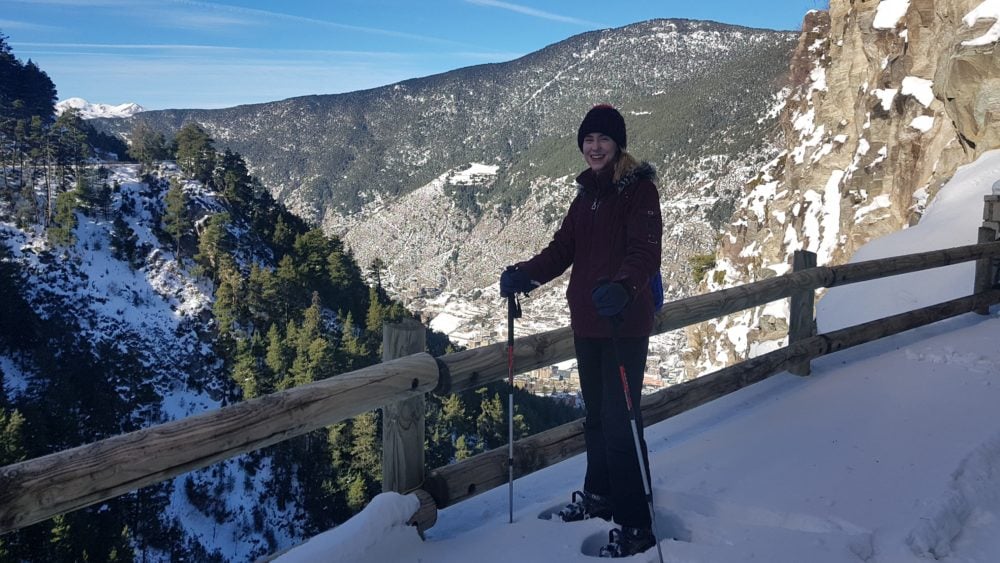
When I tell people that I spent January in Andorra, their first question is usually “…What’s Andorra?”
It’s a question I’ve gotten pretty good at answering over the past couple of months. So I’ve decided to compile an FAQ.
January in Andorra FAQ
What’s Andorra?
Andorra is a tinnnnnyyy little country in Europe. It’s about double the size of Boston by area and about a tenth of the size by population. So by U.S. standards, it probably wouldn’t even qualify as a city.
Where is it?
Up in the Pyrenees, right between Spain and France!
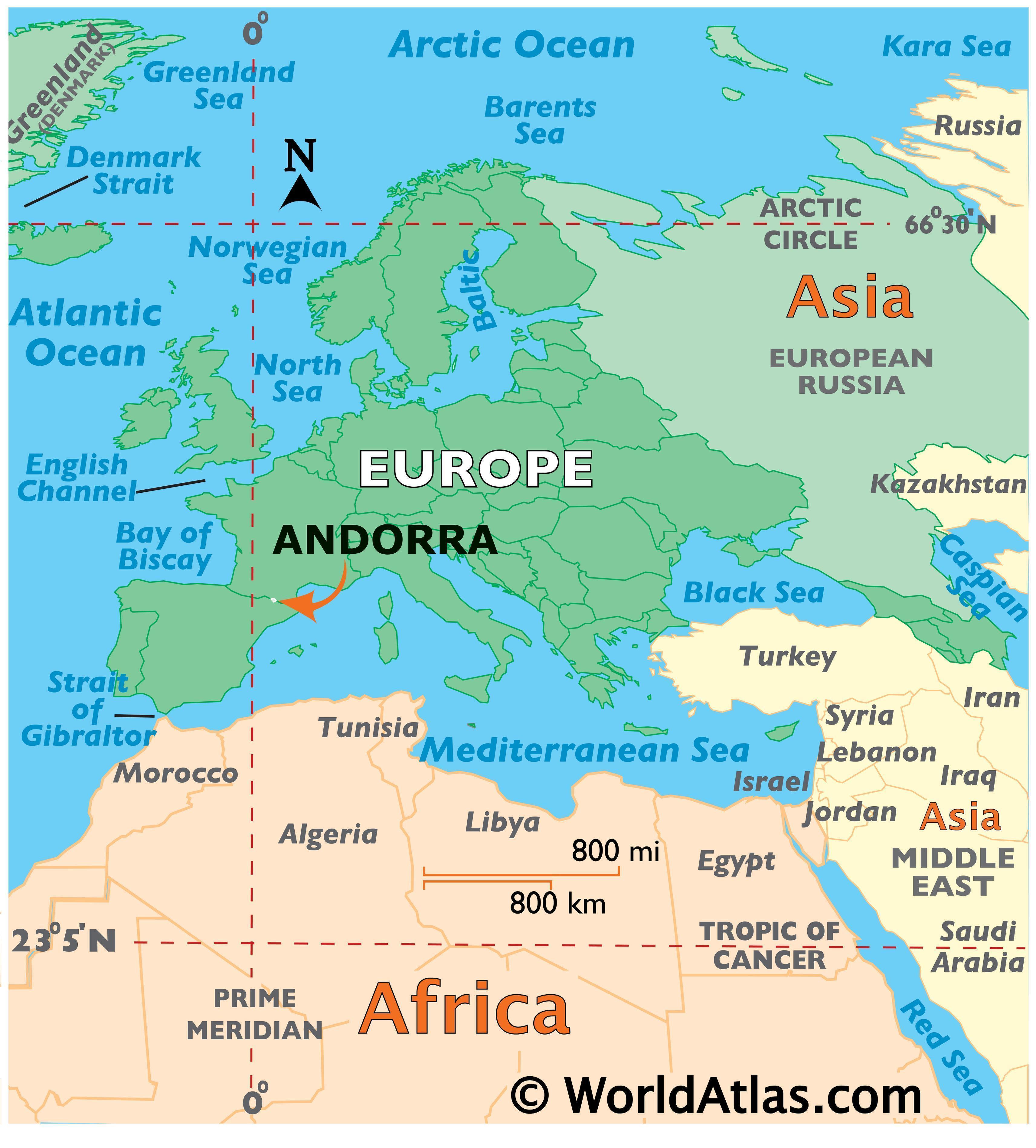
Wait, you still don’t see it?
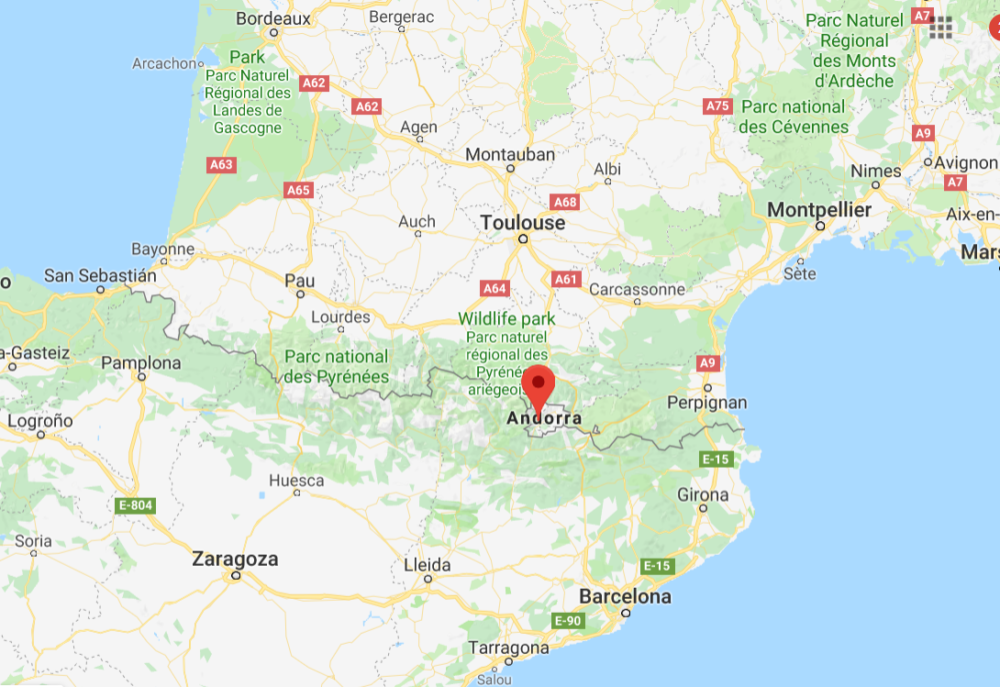 It’s there, I promise!
It’s there, I promise!

The country is actually split into 7 “parishes”, or small towns, which you can see in the map above: Ordino, Canillo, La Massana, Encamp, Escaldes, Andorra la Vella, and Sant Julià.
Fun fact: if you’re a fan of alpine skiing, the World Cup finals are being held in Andorra in a few days, so you’ll be able to see it in on TV!
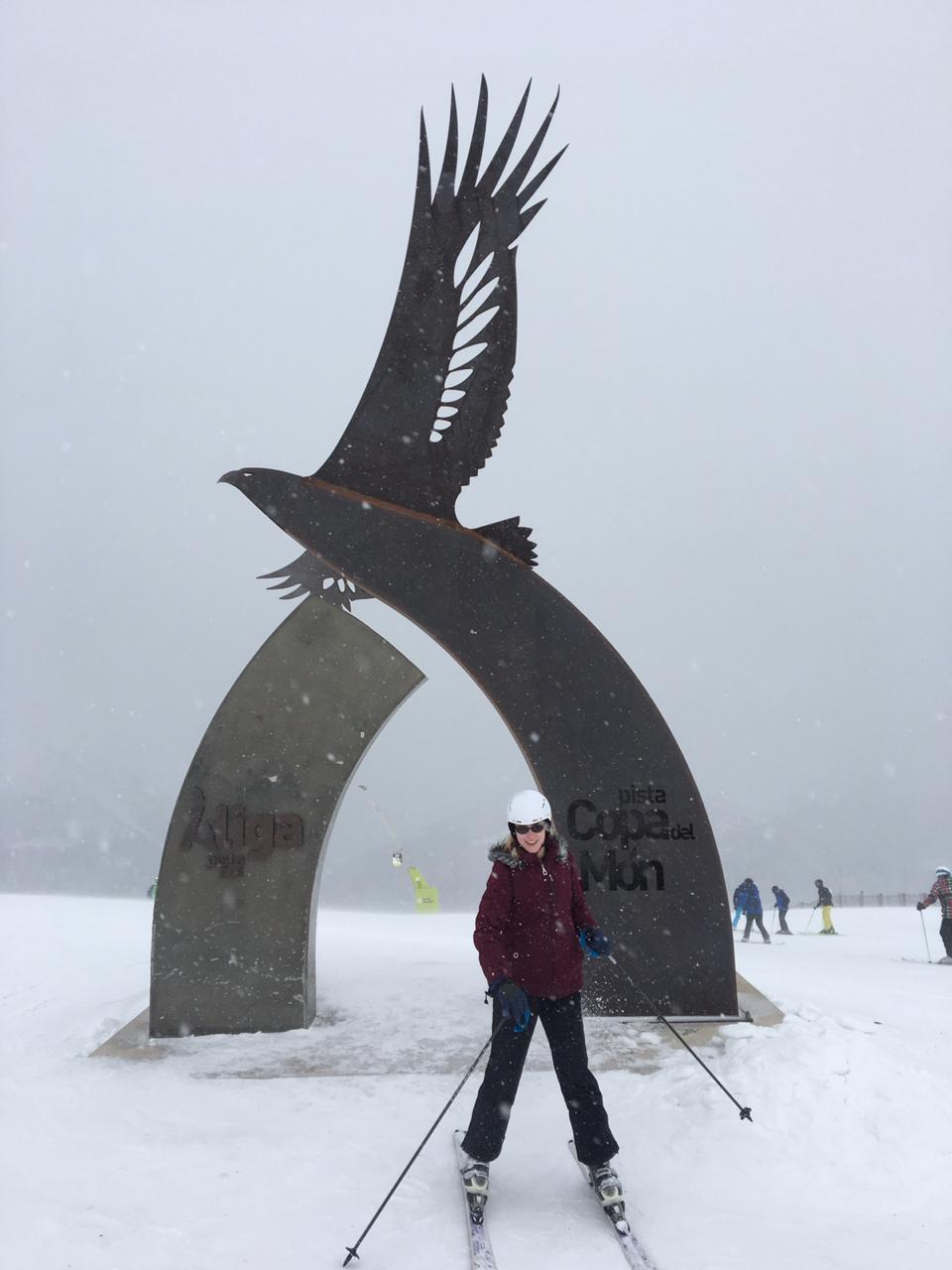
And I’ll be participating! Jk, as you can probably tell from my stance in this picture I’m nowhere near good enough. This is one of the world cup ski slopes! “pista Copa del Món” means “World Cup ski slope” in Catalan.
Are you sure it’s a country?
Yes! Well technically it’s a principality, or according to Wikipedia, “a sovereign microstate”. It’s definitely not just a city. It’s a member of the United Nations, and although it’s not a member of the EU, the euro is the national currency. There are even Andorran euros!
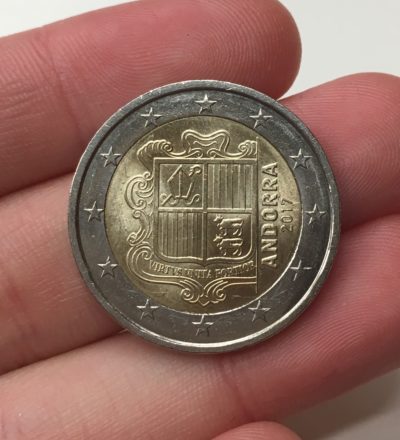
One of a special series of euros printed with the Andorran seal. On the seal, you can see symbols representing the two co-princes of Andorra (keep reading to learn about the princes!)
It’s also not just an offshoot of France or Spain (at least not technically). It’s got its own national government, in addition to 7 local governments, one for each of the 7 parishes.
I got to visit the seat of the national government!
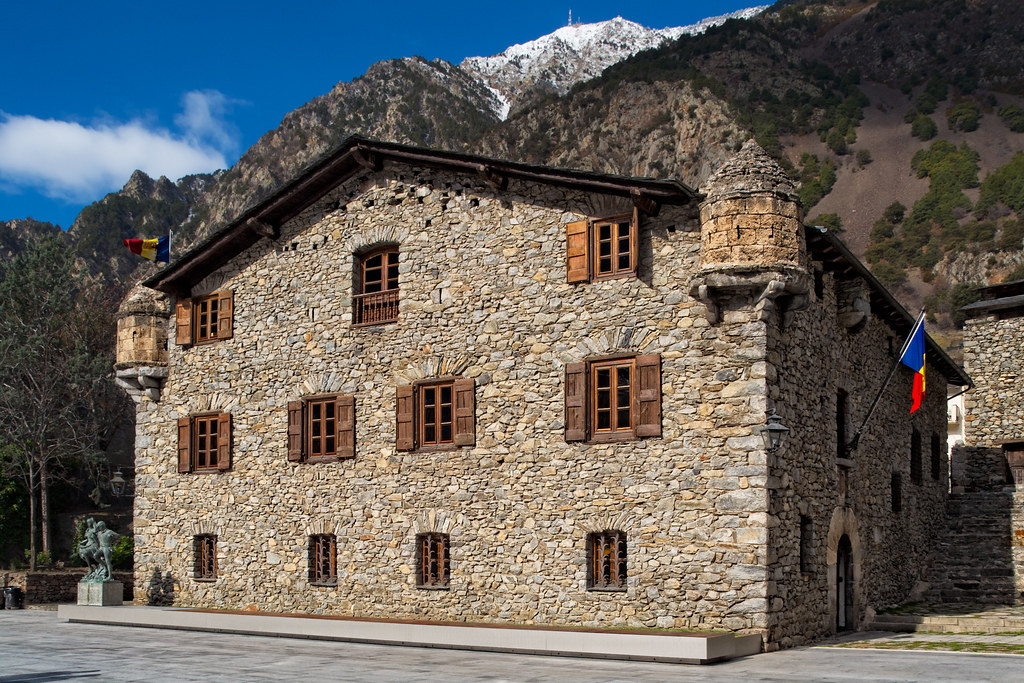
This is La Casa de la Vall, the historical government building of Andorra. Picture from flickr
Andorra’s national parliament, the Consell General de les Valls, is the second-oldest parliament in Europe. It has 28 representatives, some of which are elected nationally and some of which are elected on a parish-by-parish basis. The parliament is responsible for making the laws of the country. The parliament recently moved to a new, modernized building with a lot of neat technology, including electronic voting, which makes it officially fancier than the U.S. House of Representatives.

The seat of the Andorran parliament–both the old, historical chambers on the left and the new, high-tech chambers on the right. We weren’t allowed to take pictures inside, so pictures are from the Casa de la Vall website and the company who made the new parliament building.
Interestingly, although the Consell General is able to elect its own Head of Government, the Head of State is chosen via a decidedly more archaic process. The state is headed by two “co-princes”, one from Spain and one from France. This arrangement dates back to the 13th century, when the Spanish Bishop of Urgell and the French Compte de Foix signed a treaty establishing joint leadership of the principality, and has continued through to modern day, with the inheritors of these two titles also inheriting the position. Except at some point the French house of Foix merged with the ruling family of France, which means that nowadays, the title holding the French princeship is actually the president of France. Which means that Emmanuel Macron is a Prince of Andorra.

The local city government of Encamp, the parish of Andorra where I was living. Portraits of the two current co-princes are hanging on the wall. Macron is on the right.
France and Spain have a lot of influence on Andorra, as is to be expected. In fact, there are three school systems in the country–Andorran, Spanish, and French, each sponsored by one of the three countries. The Andorran system is actually the most recent!
Why Andorra?
Even my host dad seemed a little surprised when I told him that I had specifically asked to be placed in Andorra. But I was actually really excited because Andorra is one of the few places where they routinely speak both Spanish and French. I’m a little bit of a language nerd and I’ve been taking Spanish classes since middle school and French classes since high school. In Andorra, I could practice both, which made me absurdly happy. And I also learned una mica of Catalan!
If you’re still unconvinced that the language landscape there is as fascinating as I seem to think, read on.
What language do they speak?
The simple answer is Catalan. That’s the language they speak in Catalonia–you know, the autonomous community in Spain (including Barcelona) that is regularly agitating for independence. Andorra borders Catalonia. The roads connecting Andorra to Barcelona are more reliable than those to its French counterpart, so there is a lot of cultural overlap between Andorran and Catalan culture. A lot of Andorrans are really proud of the Catalan language.
The true answer is a lot more complicated. Catalan, Spanish, French, English, and Russian are all spoken to some extent, roughly in that order of prevalence. Geography, politics, immigration, economics, and professional needs all play a role in the languages people use and in what context.
Among the people I was around, Catalan was the language of daily conversation. Everybody also spoke perfect Spanish. French was also pretty common, with some people speaking fluently and most everybody understanding. English was less common, and although I didn’t experience it much personally, I was told that Russian was becoming more important. To some extent, people’s grasp of French, English, and Russian depended upon their career. For instance, the technology students that I was interacting with had to learn English, because so much technological documentation is written in English. However, for other students at the school where I was teaching who were studying to be corporate secretaries, French was more important because they had to interact with French clients. Some people in the tourism sector learned Russian because of the large volume of Russian tourists that came to ski.
But language was also a function of social group and geography! Different neighborhoods tended to attract higher proportions of tourists from different countries and reflected the languages thereof. For instance, one night I went to a restaurant in a heavily English neighborhood where a lot of the waiters were speaking English. I was also told that in some parts of Andorra, Catalan is not as common, either because a lot of the people working there had immigrated from Spain or Latin America, or because Spanish was more convenient for communicating with Spanish tourists.
And finally, the school system in which you study highly influences the languages you are exposed to. The language of instruction in the Andorran, Spanish, and French school systems is Catalan, Spanish, and French, respectively. Don’t get me wrong; these schools are far from monolingual. The students at the Andorran school where I was teaching took FOUR DIFFERENT LANGUAGE CLASSES: Catalan, Spanish, French, and English.
As an American and someone who loves language, it is hard for me to express how impressed and jealous I am. Growing up in the American school system, you learn: English, English, maybe a little bit of Spanish or Latin, and more English. USA, you have to up your game.
Finally, I’m just going to add that as an English-speaker, I’m usually really spoiled when I travel in the sense that typically a lot of people are used to speaking English at least in a tourism setting. Andorra was maybe the first place I’ve visited where English is not a priority (I mean, look at how many other things they have to learn!). Which was actually really fun.
What were you doing there?
I was teaching STEM subjects to high-school-aged students who were training to be IT personnel. MIT has a program called GTL–Global Teaching Labs–where you visit another country during the month of January and teach high-school-aged students in a subject you are knowledgeable about. Although I’ve traveled over IAP before, this was my first time teaching.
I was placed at a school called the Centre de Formació Professional d’Andorra (in English, Center for Professional Formation; CFP for short). The CFP is a vocational school mostly geared towards students who want to learn a trade so they can go work in a certain area. The students are roughly high-school aged; the students in their third (and last) year were around 19-20. There are 5 courses of study, including hairdressing, being a corporate secretary or assistant, a sports trainer/assistant, and informática or Information Technology. I was working exclusively with the IT students.
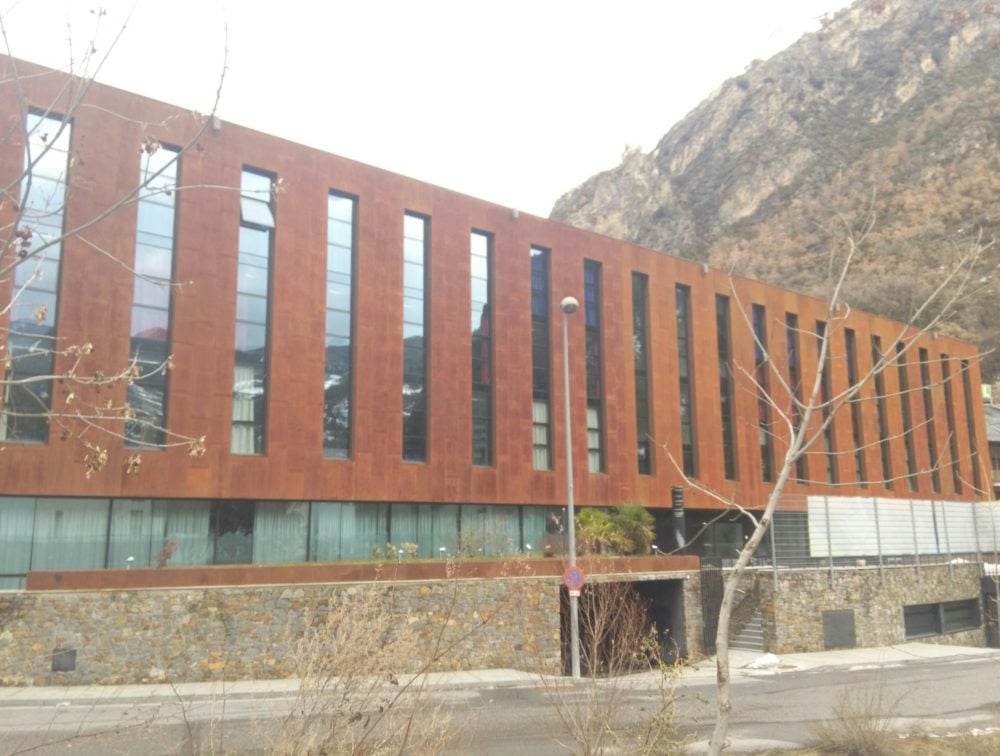
The outside of the CFP, where I was teaching
The subjects I was teaching ran the gamut, and my role in each depended on the preferences of the teacher. I taught classes in physics (both kinematics and electromagnetism), English, and computer science. In some classes, like electromagnetism, I was more like an assistant teacher, helping run example problems on the board and explaining concepts in English. In others, I was more like a substitute; the regular teachers had material that they wanted me to cover, but it was up to me to design lessons, including practice problems and activities, to convey that information. And in the informática classes I basically had free rein to do whatever I wanted!!!
Another fascinating aspect of teaching at the CFP was–you guessed it–the language! To my surprise, I was actually technically forbidden from speaking Spanish at the school. I taught all my classes in English, per the instructions of the GTL program and the instructors at the CFP. Since English is a third or fourth language for most of the students (and teachers), I was looking forward to using Spanish to clarify points of confusion. But since the school was part of the Andorran system, speaking Catalan was actually a point of national pride, and speaking “castellano” was seen as something of a concession to Madrid. In reality, I ended up speaking some Spanish anyway when I needed to get a point across, but I thought it was fascinating how language had such political connotations.
One more thing that really took me aback was that every single IT student I was teaching was male. Out of the three-year program encompassing maybe 75 students, there was only one female in her first year, who I never saw because I didn’t teach first year students. I think that’s the starkest example I’ve ever seen of a gender divide in STEM.
What was the hardest part about teaching?
One thing I had to adjust to quickly was the complete difference in educational theory at the CFP versus MIT. MIT is quite theoretical. I have spent my entire undergrad learning equations and then learning math so that I can manipulate those equations. I rarely touch hardware other than my keyboard. Even MIT’s attitude towards learning how to code is surprisingly theoretical. The first lecture of our intro to Python class is about the difference between an algorithm and a program. You learn Python as a first coding language because it’s an easy high-level language for programming algorithms without worrying about low-level hardware. And in upper-level classes, you either A) go a theoretical-mathematical route and leave coding behind, or B) learn to program in C when you see your first Operating Systems pset. For the most part, MIT teaches theory, and practical know-how you have to learn on your own.
The CFP is totally different. The first day of electromagnetism class, the students’ homework assignment was to try to create a motor that produces infinite energy by dismantling whatever electronics they had at their disposal. The IT classes were packed with rows of servers and network routers (my host dad, who also teaches IT at the CFP, was horrified that I had never touched a router before). Classes, especially IT classes, tended to be really hands-on, and if I or another teacher veered into theory for more than half an hour, the students rapidly lost interest.
So quickly, my original plan of adapting some of my favorite MIT class materials from MIT’s Open Course Ware fell apart, and I had to re-plan my lessons. Instead, I ended up designing my own, hands-on activities for the students. Since I had a lot of freedom with my informática lesson plans, I wanted to make sure I chose subject material that was both interesting and relevant to the students, but also well-matched to my skills–something important that they might not learn otherwise. I ended up teaching them some coding in Python using Python tutorials that I developed, because Python is an easy-to-learn yet widely-used language that I thought might come in handy. Then, given that the students were learning a lot about how to configure servers and networks, I designed an activity about a launching a Python web server in the cloud using a free platform called Heroku, and then finally I did a brief introduction to Django, a Python framework for developing web applications.
I ended up running classes more like office hours–students worked on the activities at their own pace, and I was there to give explanations and answer questions. I think this kept the students more engaged!
Teaching at the CFP was also quite humbling because it showed me how limited even an MIT education can be. A lot of the practical systems configuration knowledge that these students are learning is totally outside of my sphere of knowledge. If you handed me one of their homework assignments, I would be totally lost.
There is always so much to learn, even when you’re the teacher :)
What was the best part of being in Andorra?
110% my host family. My host family was awesome.
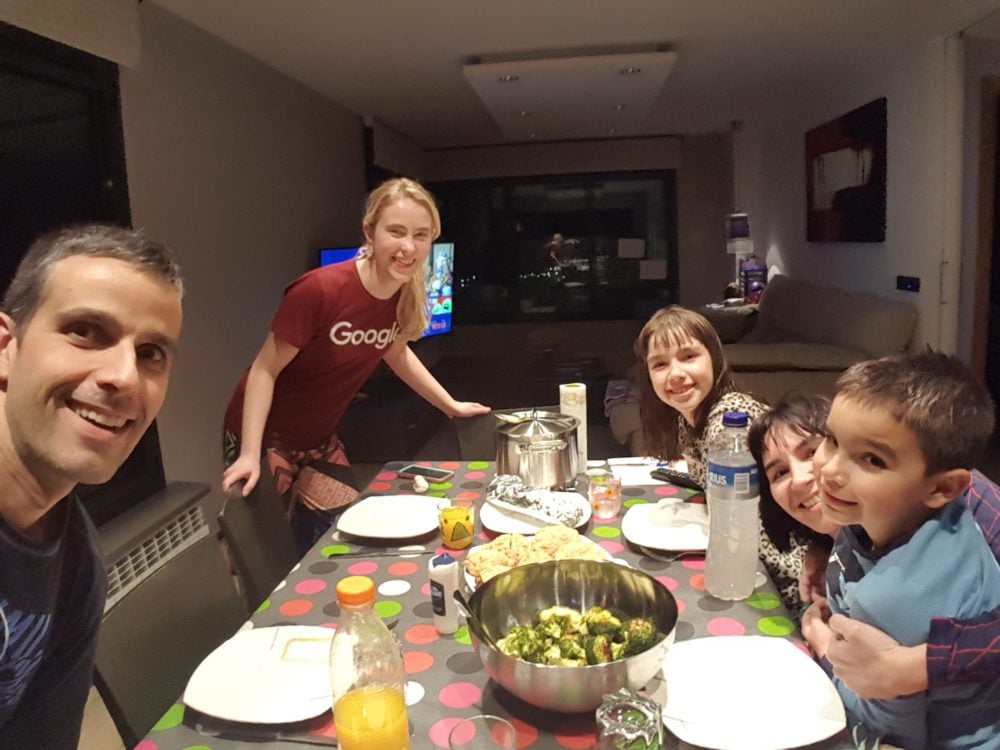
My host family! Pepo and Carina and their two children, Pol and Alèxia
My host dad is a teacher of IT at the school where I was placed–in fact, a lot of the classes I was teaching were with his students! He was the one who introduced me to the school, the students, and the other teachers, and got me settled into my teaching routine. He also taught me a ton about the CFP, the Andorran education system, and Andorra in general. (In fact, he’s the source of a lot of the information in this blog post…) In addition to my host mom and dad, there were also two young children, Alèxia and Pol. And because Andorra is so small, a lot of extended family lived in the same village. Every weekend there was an extended family lunch with grandparents, cousins, in-laws…and me :D
I felt really included in my host family. I was invited Alèxia’s 10th birthday party and I went to one of Pol’s soccer games. I ate dinner with the family and hung out with them on weekends. I cooked with the kids and taught Alexia how to make a pillow. They really went out of their way to introduce me to Andorran culture. The first day I showed up, my host dad taught me how to make pan con tomate. They had postponed the Christmas tradition of the Tió de Nadal until I arrived so that I could participate in it with them. They showed me a lot of cool sites in Andorra, like a gorgeous mountainous lookout called el Mirador del Roc del Quer, a beautiful modern cathedral called El Santuari de Meritxell, and the snow-fabricating station at Grau Roig, part of the biggest ski resort in Andorra. At the end of the month, when I was absolutely exhausted because between teaching and exploring I barely had time to sleep, my host dad said to me “Well, we didn’t get to see everything, but I think we did a pretty good job.”
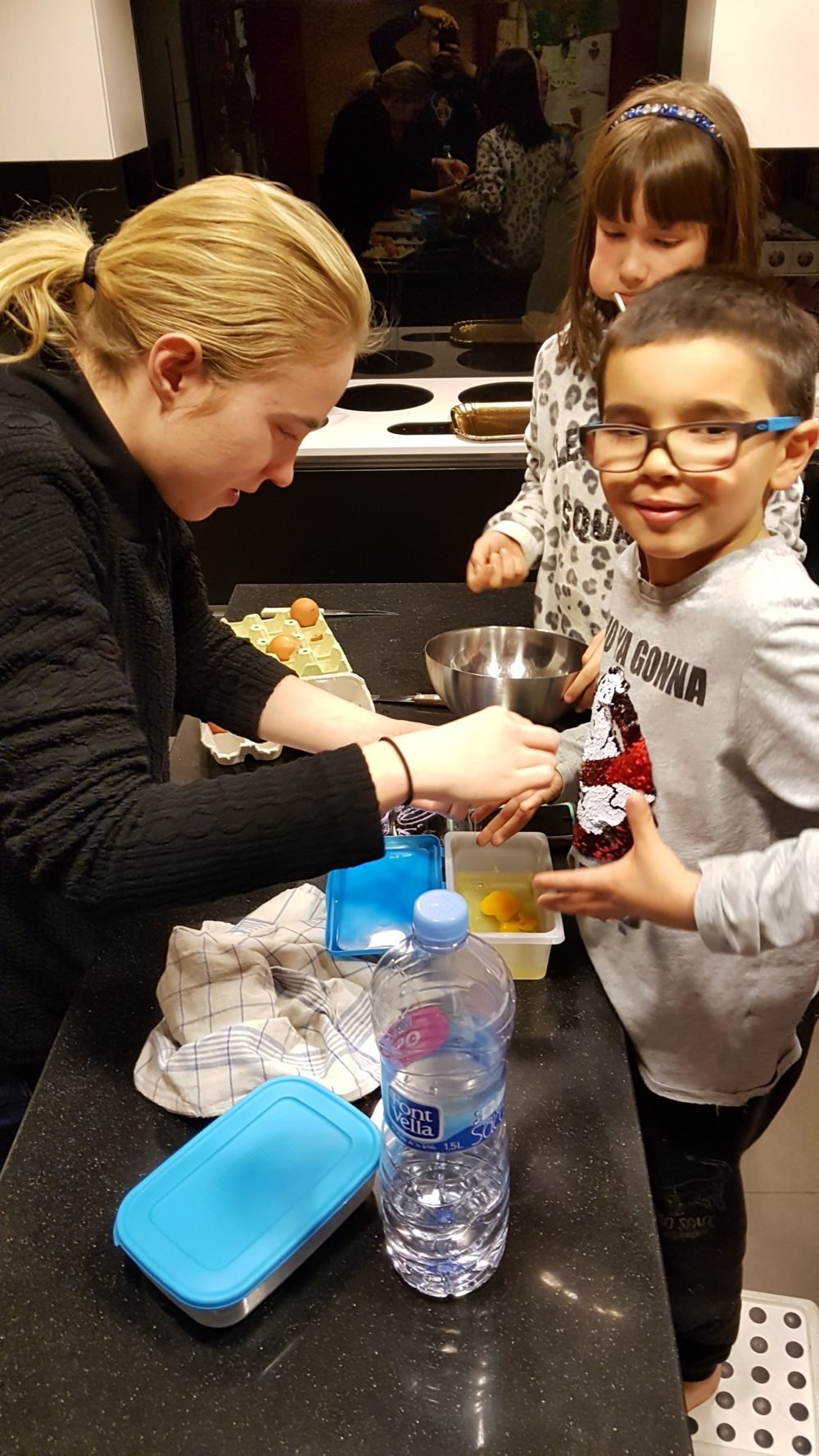
Baking molten chocolate cakes with the kids!
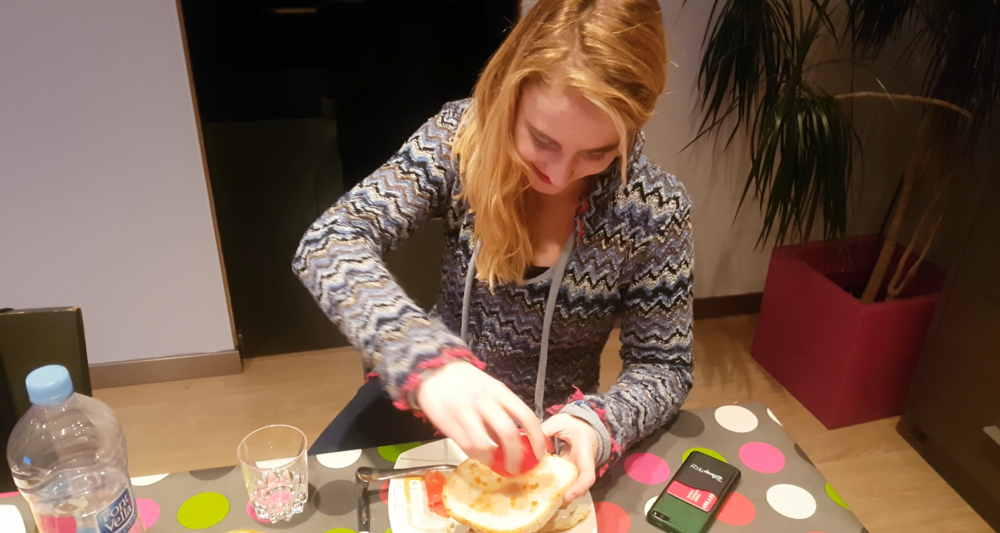
Pan con tomate, or bread with tomato, does not involve putting slices of tomato on bread, as you might think–instead, you rub an overripe tomato on top of your bread and finish it off with salt and olive oil and sometimes Iberian ham.
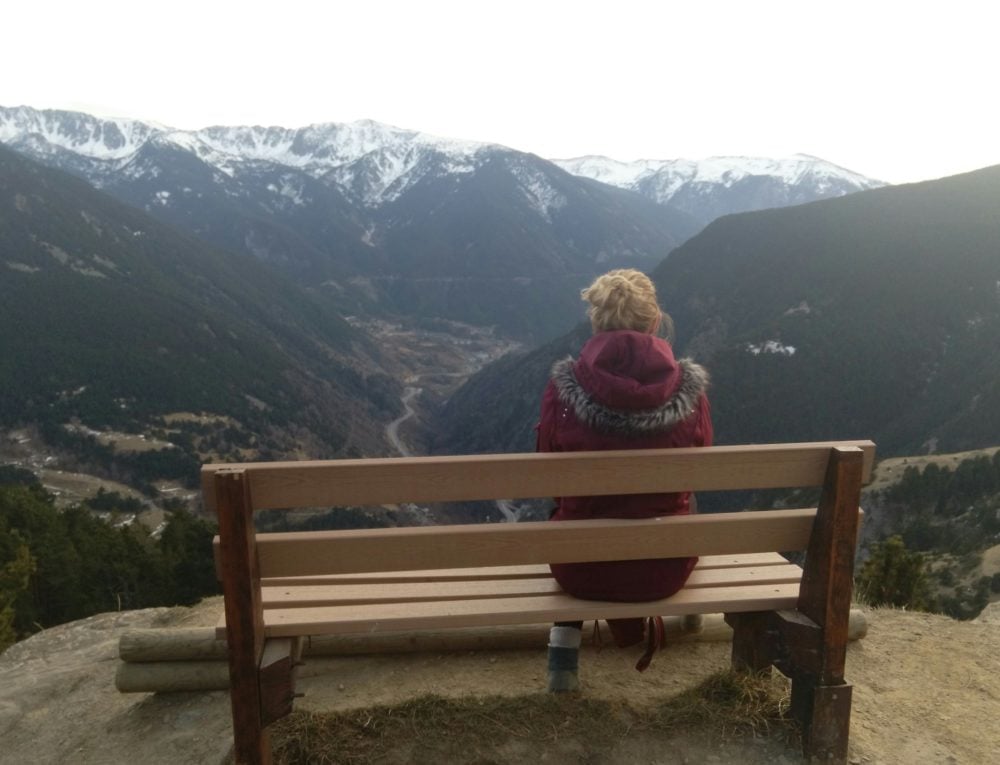
The view from Roc del Quer
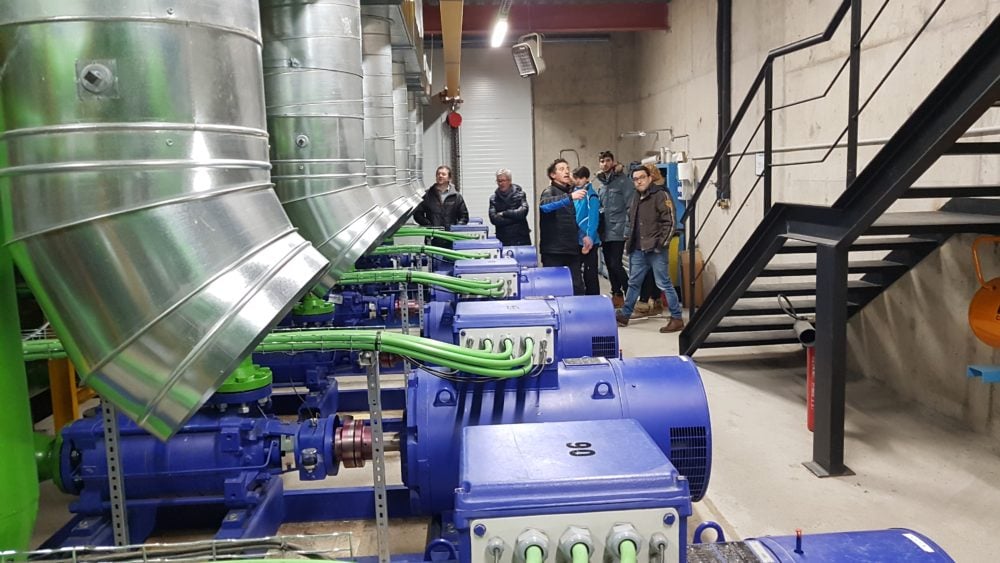
Part of the huge, complex system of pumps and tubes that powers the artificial snow fabrication at Grandvalira, Andorra’s largest ski station
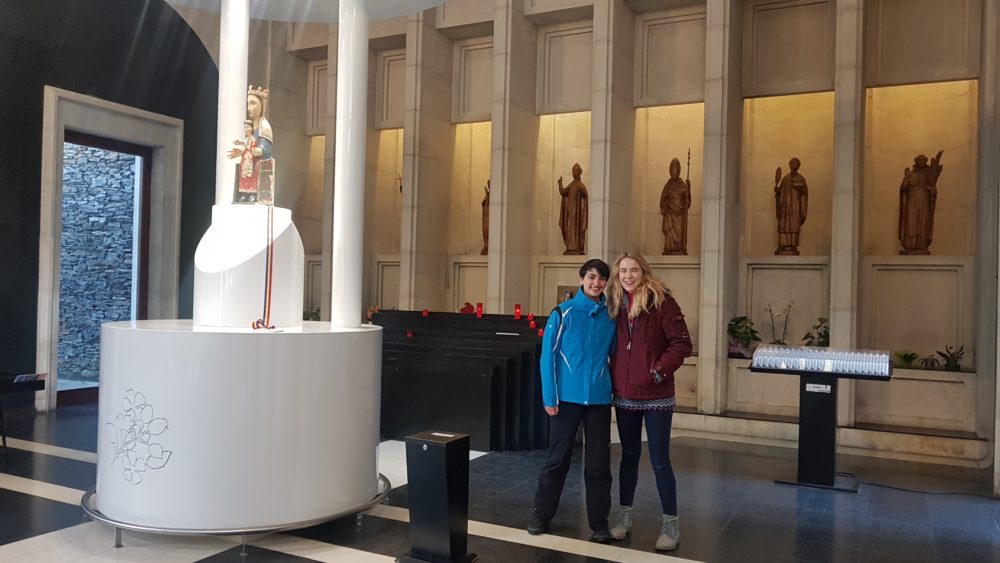
Me and Avital, another MIT GTL student, inside the Santuari de Meritxell.
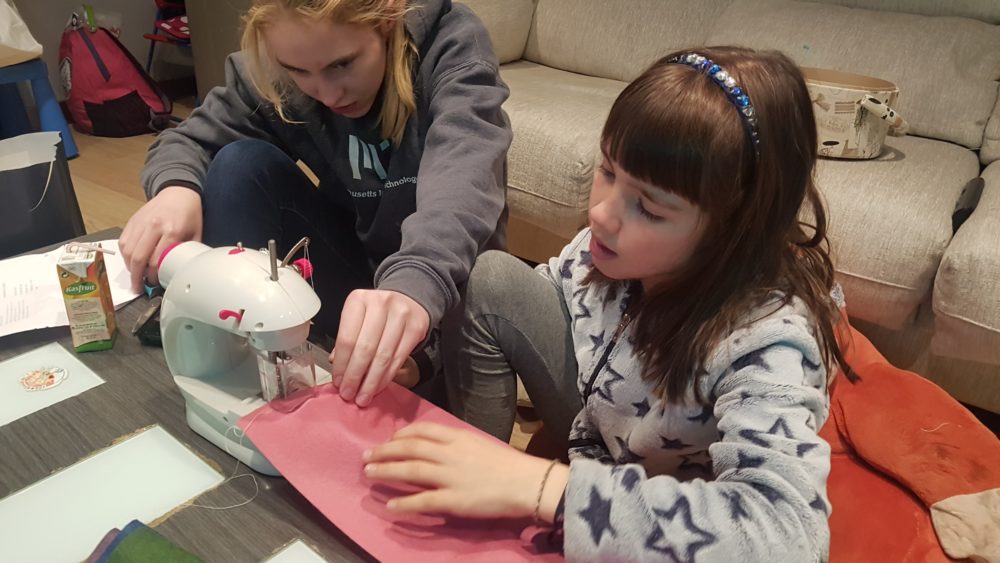
Sewing with Alèxia!
Here is a video of the tradition of the Tió de Nadal. I really recommend reading more about this tradition, because it is fascinating and from an American perspective, totally bizarre.
Living with my host family also gave me an incredible opportunity to practice both Spanish and French! They spoke Catalan among themselves, but they all also spoke perfect Spanish. Additionally, my host mom spoke fluent French because her father is actually French, and Alèxia spoke better French than I did. The kids were learning English, but in an ironic twist, their homework was so British that I didn’t even know some of the vocab. So I spoke to my host dad in Spanish, my host mom in French, and the kids in Spanish, French, English, or sometimes horrible Catalan. It was awesome.
My colleagues at the school were really welcoming too. Anna, the director of the CFP, invited me to Caldea, the an incredible spa in downtown Andorra la Vella, where you can go do a zumba class and then relax in an outside hot tub next to a pile of snow. Yeah, it’s pretty crazy.
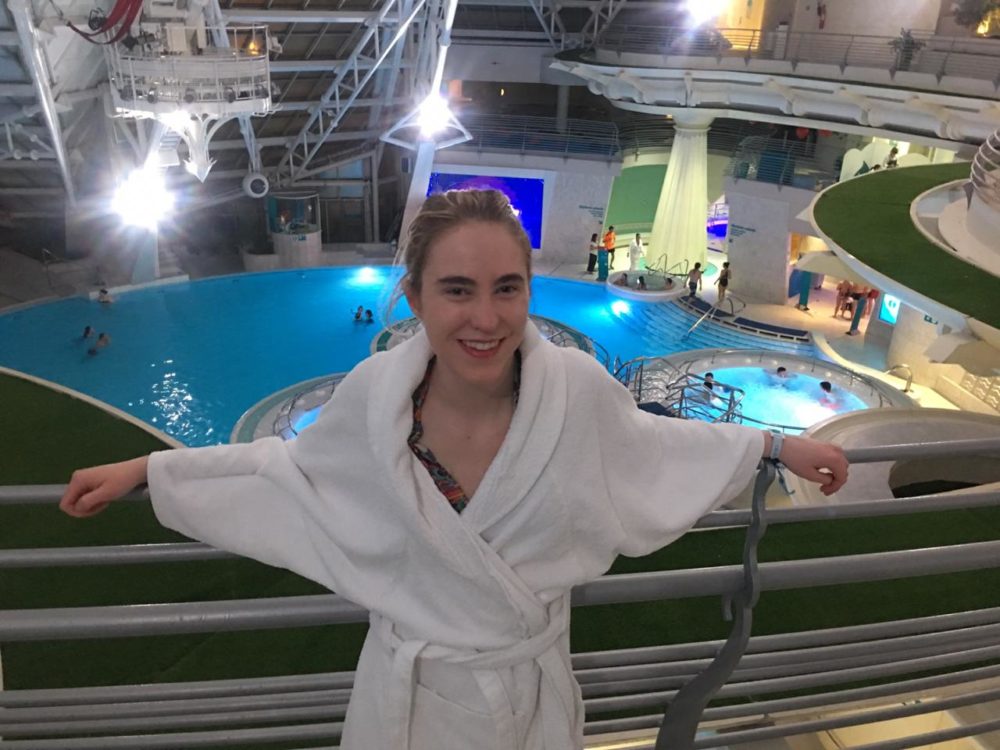
The giant indoor pool at Caldea
I also made friends with Cristina, a physics teacher at the Centro. My last weekend in Europe, I went down to Barcelona with her and her family. We went to la Pedrera, one of the houses designed by Gaudí. Then we went to an FC Barcelona football (sorry–soccer) game!

Cristina and I skiing. She’s a really good skiier.
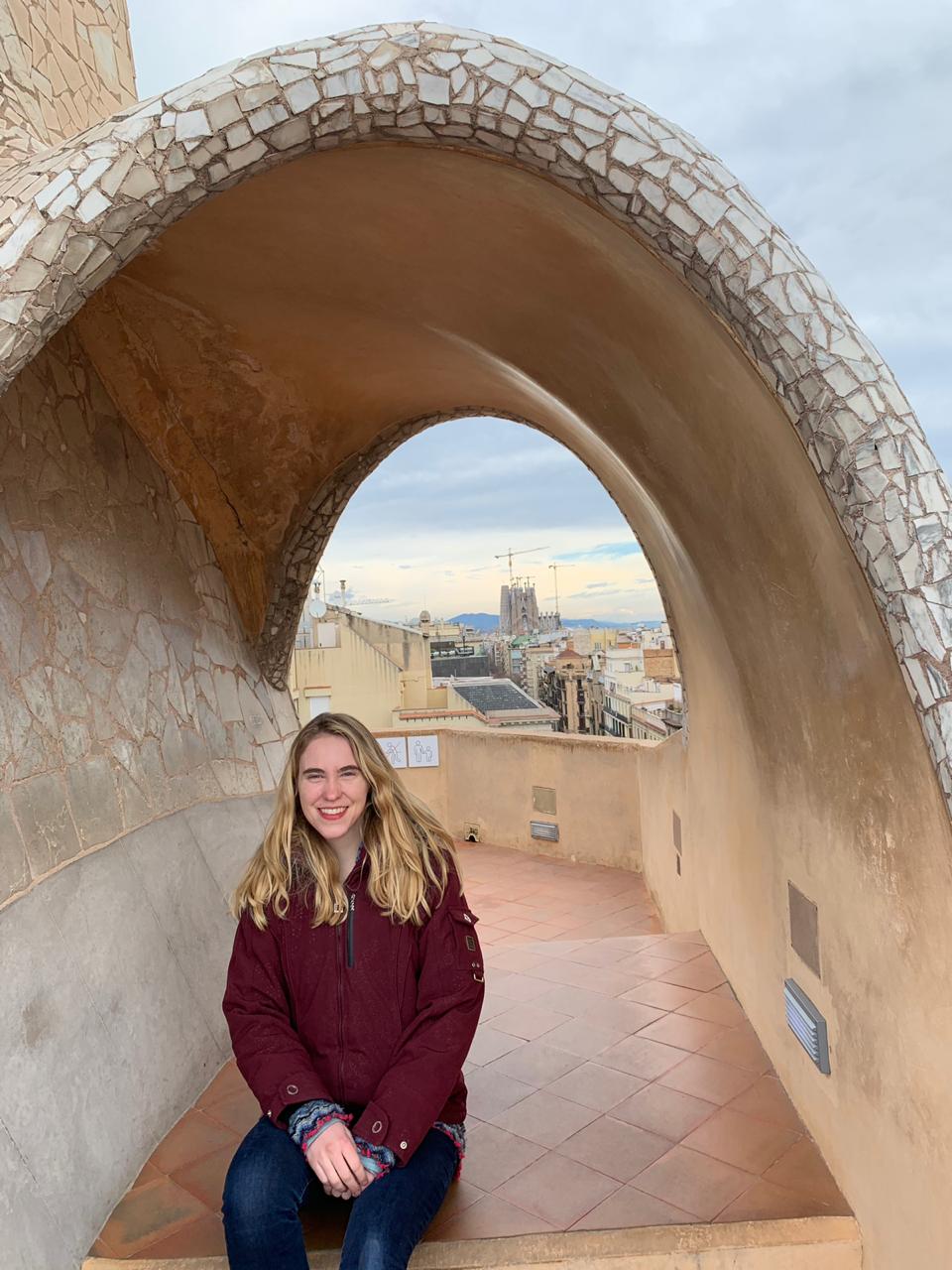
A view of Barcelona from the roof of Gaudí’s Pedrera. You can see possibly his most famous work, the Sagrada Familia cathedral, in the background.
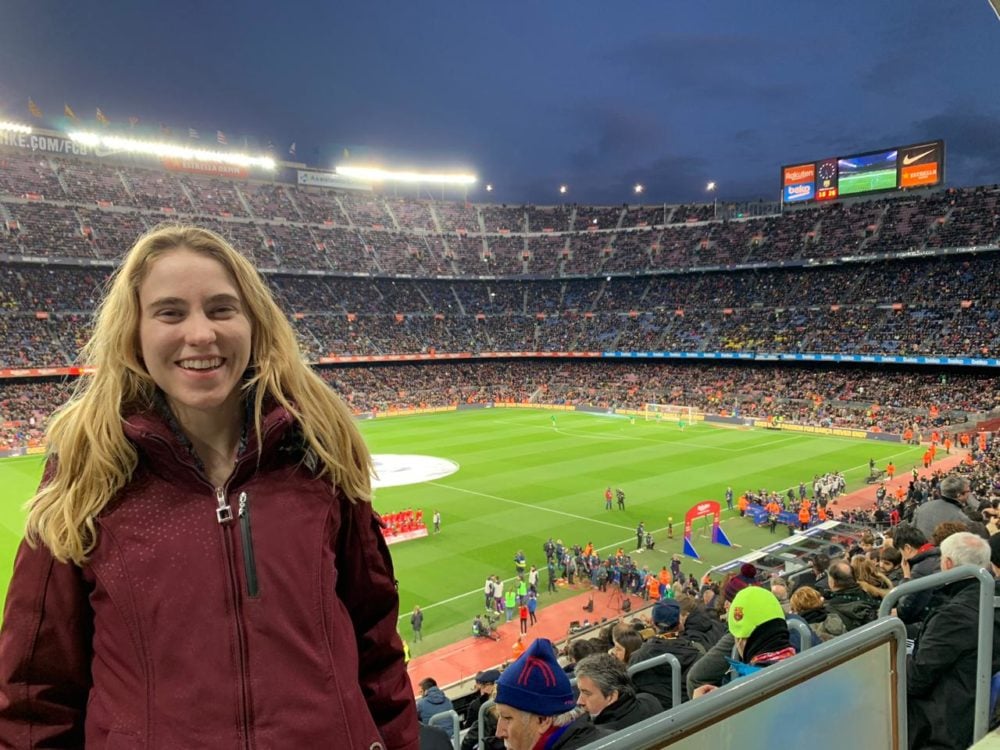
Camp Nou, Barça’s stadium! Barça was playing Valencia, and they only tied, but at least I got to see Messi score twice :D I have now sworn to be a lifelong Barça fan.
Honestly, before arriving in Andorra, I was pretty nervous about it. I didn’t really know what to expect from the country, and it was really small and I was afraid I might get bored or feel lonely. I had nothing to worry about. My host family and the people at the CFP were so friendly and welcoming and went out of their way to make it a great experience for me. I had so much fun with them that I ditched all my plans to visit France and Spain on the weekends and hung out in Andorra instead. I’m so thankful I got to live with my host family.
Was it totally awesome?
Yes. Photo evidence attached ;)
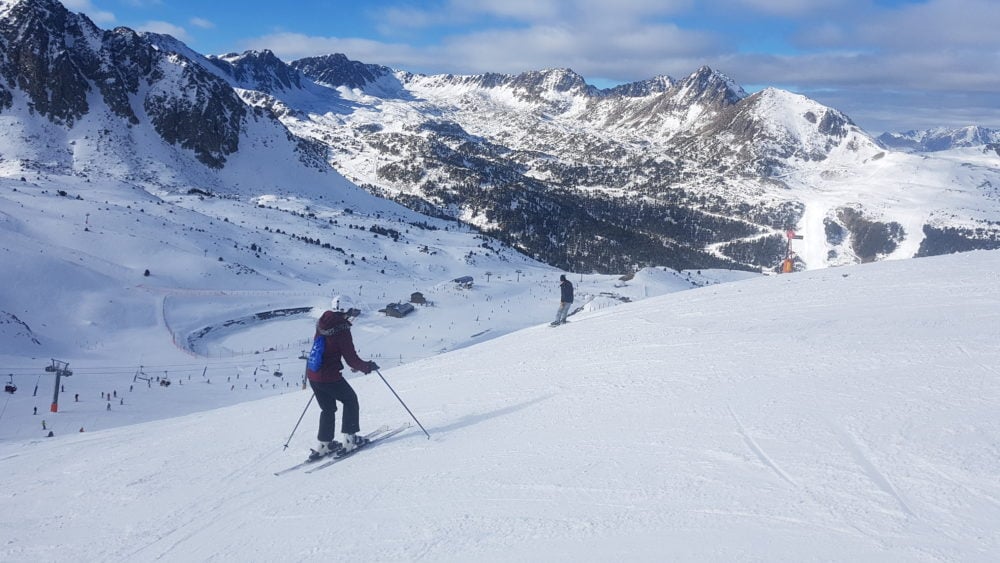
Skiing at Grau Roig. What, you thought we just went to look at the water pumps?
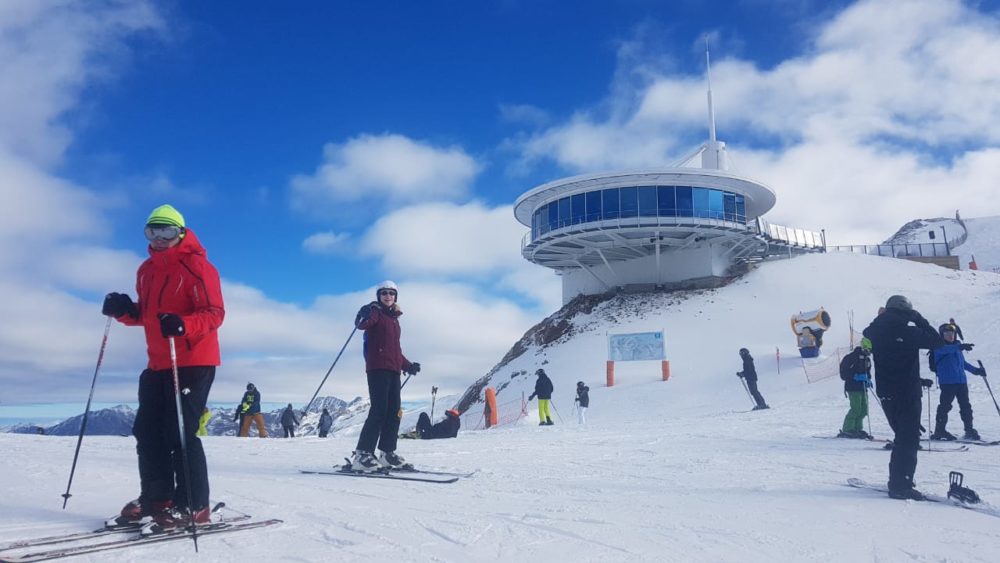
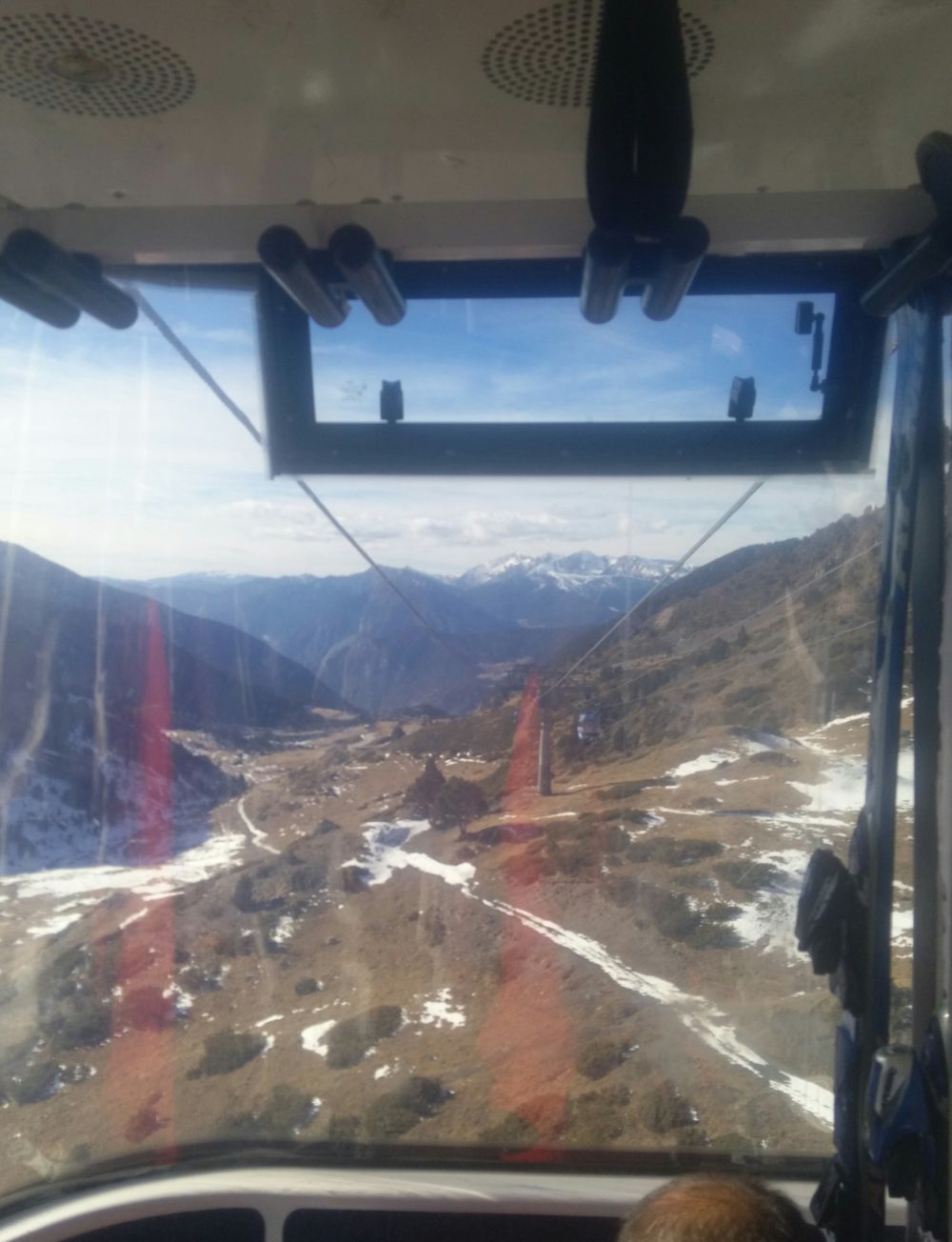
The funicular that connects Encamp to Grandvalira, nicknamed the Funicamp, is 6 km long!!!
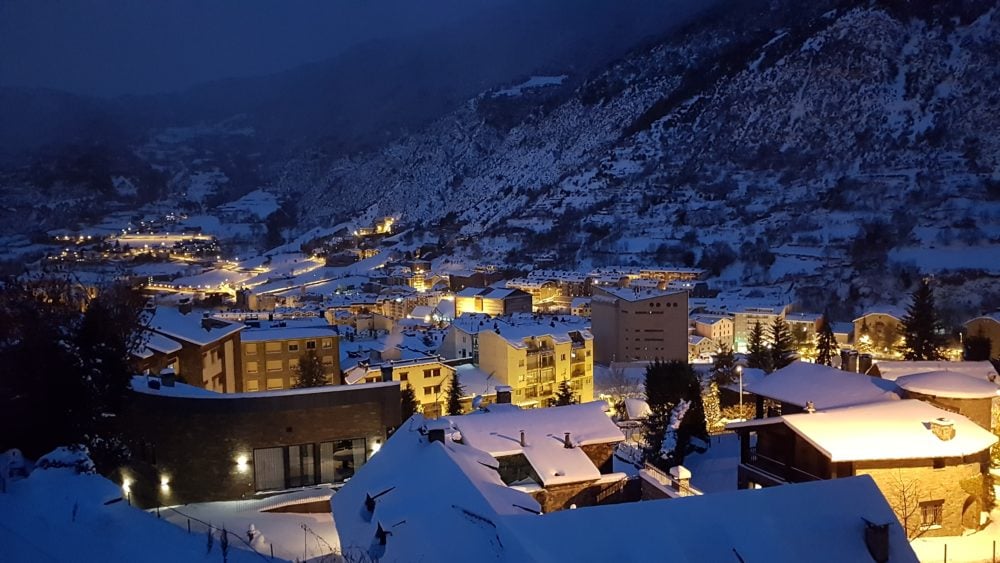
This is the view from my host family’s living room, looking out over the Andorran mountains and the town of Encamp. It’s beauuuutiful.
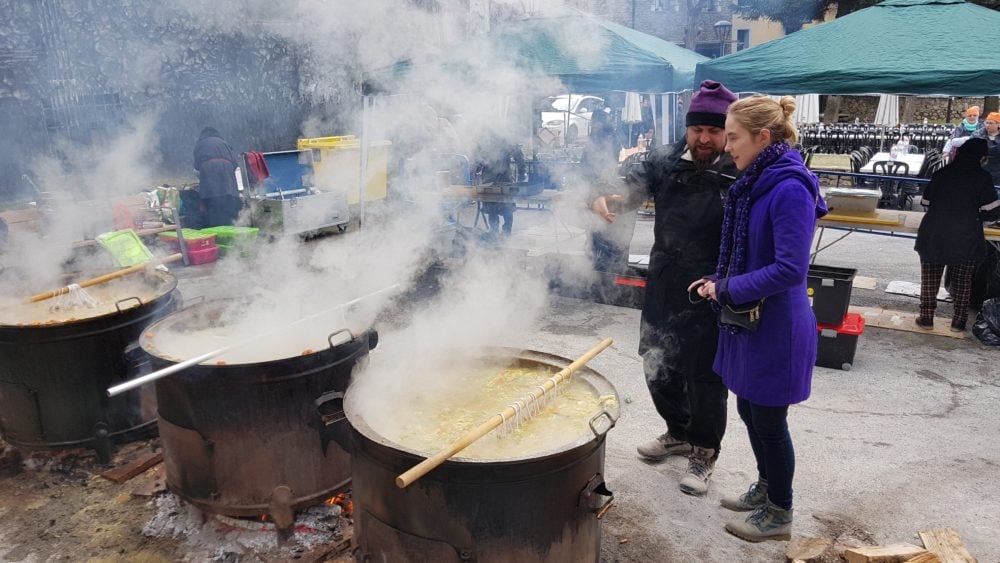
This is Encamp’s celebration of an event called the Escudella de Sant Antoni. Basically the whole town comes together and cooks many enormous cauldrons of soup, filled with veggies and Andorran sausage including a delicious black sausage called butifarra negra.
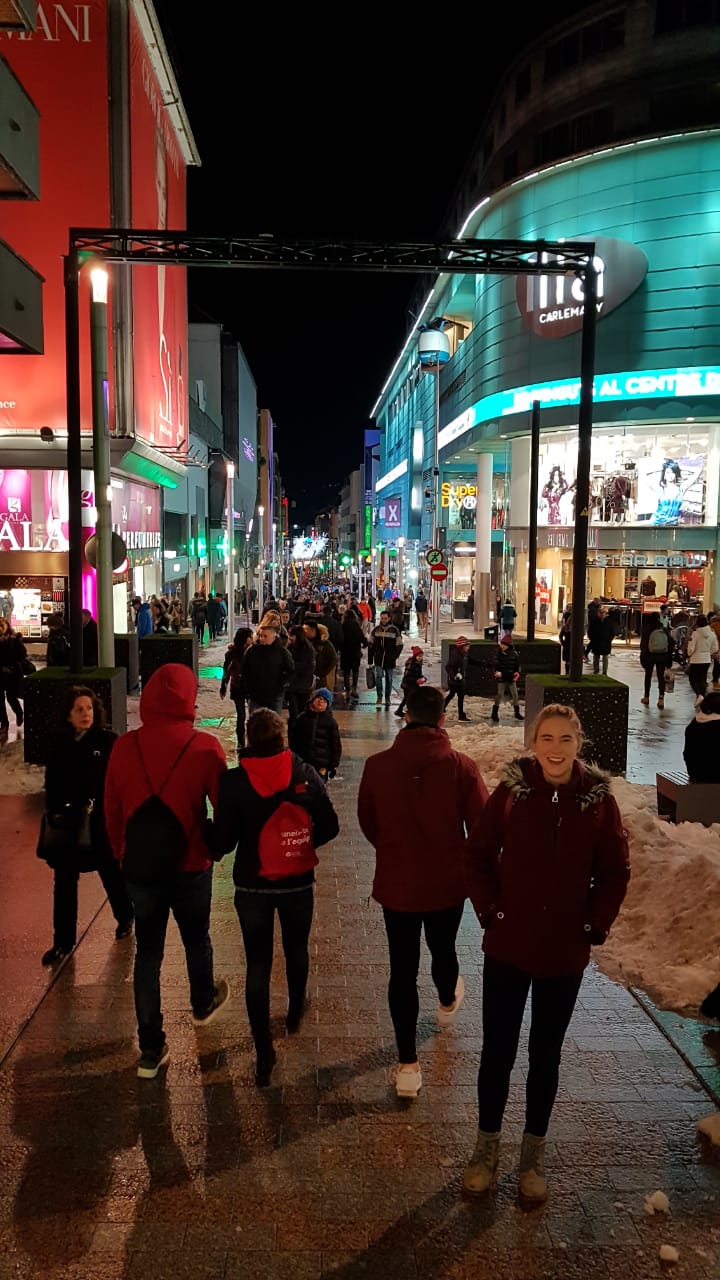
This is the commercial district of Andorra. Since Andorra’s economy relies heavily on tourism, and since taxes here are a lot lower than in neighboring France and Spain, there is a lot of luxury shopping.
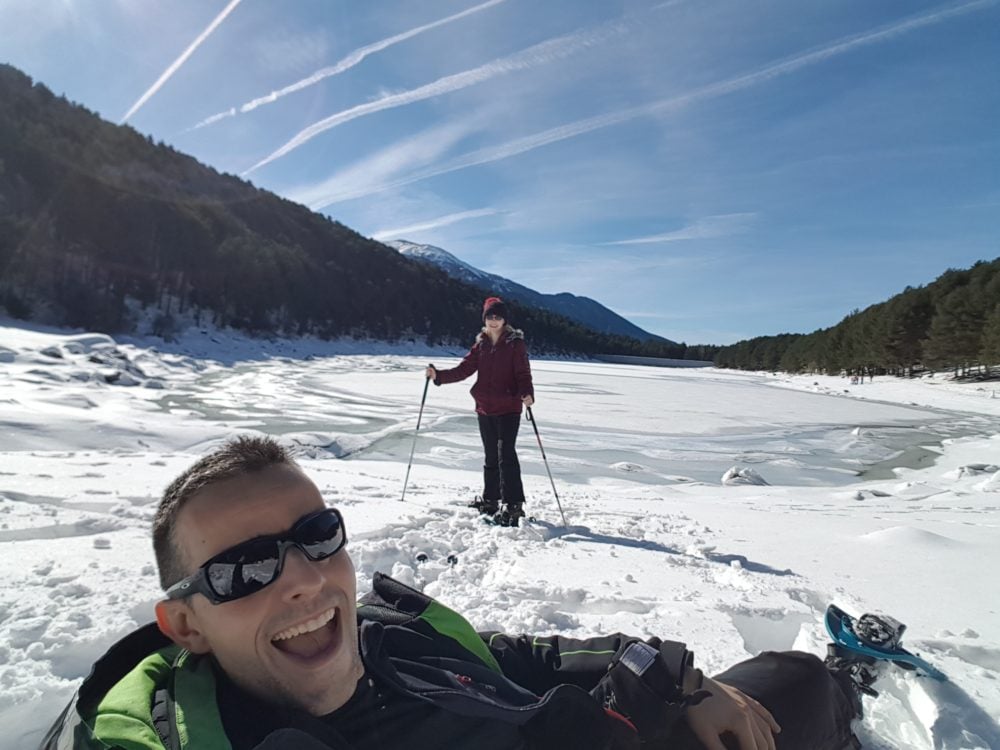
Pepo and I went snowshoeing up to a lake nearby the house. It was my first time showshoeing and the day was perfect!
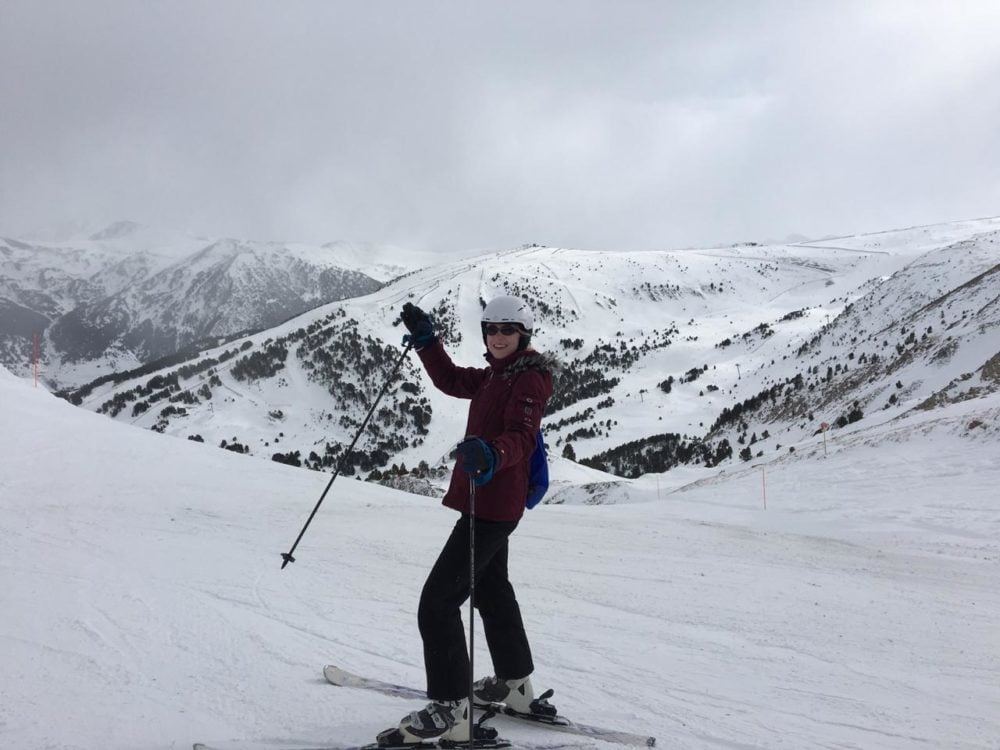
Bye Andorra!